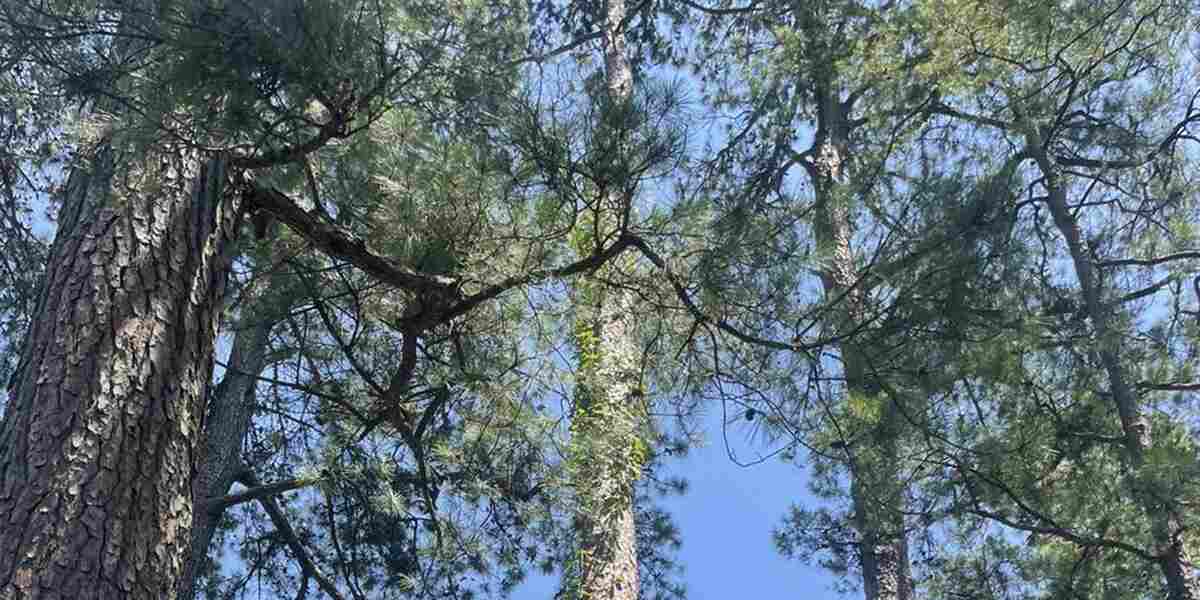What causes large holes in tree trunks? When your beloved specimen starts to resemble a horror movie prop, it’s natural to feel concerned.
As an established tree service in Hope, our team at Hawkins Tree and Landscaping knows a lot about unusual arboreal anomalies and their causes. Keep reading and arm yourself with essential gardening knowledge!

Narrowing Down the Culprits
Tree trunk damage can come from various sources, but you can generally pin it down to a select few usual suspects.
Natural Events
While fairly rare, natural events such as lightning strikes can create sizeable holes in tree trunks. A thousand volts of electricity has the sheer power to blow apart a tree, leaving a hollowed-out husk in its wake. They usually look like large, vertical splits.
Human Actions
Pruning is a wonderful practice that boosts your tree’s health, longevity, and beauty, but only when done correctly. Branches directly attached to the trunk have a “collar,” and you should always leave it intact. When you trim off a large limb and cut too close to this part, the wound can decompose inwards and turn into a gaping hole over time.
That’s why you should almost always hire a professional arborist for the job. They have the know-how to deliver all the pruning benefits without the drawbacks.
Insect Infestation
Tree hollows are often an undeniable sign of insidious insect activity. These pests can burrow, gnaw, and cause mayhem in your tree’s trunk, leading to sizable voids:
- Bark beetles: Bark beetles produce pheromones that attract even more of their ilk. These critters also carry spores that lead to fungal decay, further enlarging the hole.
- Carpenter ants: Don’t let their industrious name fool you. While they may appear to be hard workers, these ants are more like mini demolition crews that carve out their homes directly in the tree’s trunk.
- Wood borers: As the name suggests, these pests burrow into trees and weaken their structural integrity. They usually target ash, birch, soft maple, stone fruit, and willow trees.
Your best defense is to maintain the health of your specimens. A strong tree can often resist infestations on its own.
Woodland Creatures
Does your area harbor a healthy wildlife population? Woodpeckers gouge out sizeable holes in their quest for grubs.
The Federal Migratory Bird Treaty Act makes it illegal to kill these birds, but you can install deterrents like sticky repellants, flashing tape, and predatory bird mimics. Covering the trunk with plastic netting, burlap, and other physical barriers also helps.
Should You Repair These Holes?
Now that you know what causes large holes in tree trunks, what do you do with them?
Trees have an amazing ability for self-repair called “compartmentalization.” This process helps seal off damaged areas to protect the rest of the tree from infections. When you try to cover the hole with substances like cement or paint, you might inadvertently hinder this mechanism.
Prevention Is the Best Approach
While you can’t control everything that happens in the great outdoors, you can take steps to keep your flora healthy and reduce the risk of damage:
- Regularly inspect your specimens for signs of tree diseases
- Practice strategic pruning
- Maintain a clean garden, devoid of rotting wood and debris
- Apply mulch
Your Go-To Arborist in Tennessee
What causes large holes in tree trunks? Instead of playing detective on your own, Hawkins Tree and Landscaping has you covered. Our crew can identify potential issues like termite infestations or fungal infections, as well as assess structural problems like a leaning tree, to ensure the health and safety of your trees.
- Differentiate borer beetle damage from woodpecker holes
- Implement effective deterrents for wildlife
- Provide maintenance tips
- Safely remove damaged trees if necessary
- And more
Dial (870) 330-9912 today, or explore the rest of our blog and learn the dos and don’ts of pruning young trees.

